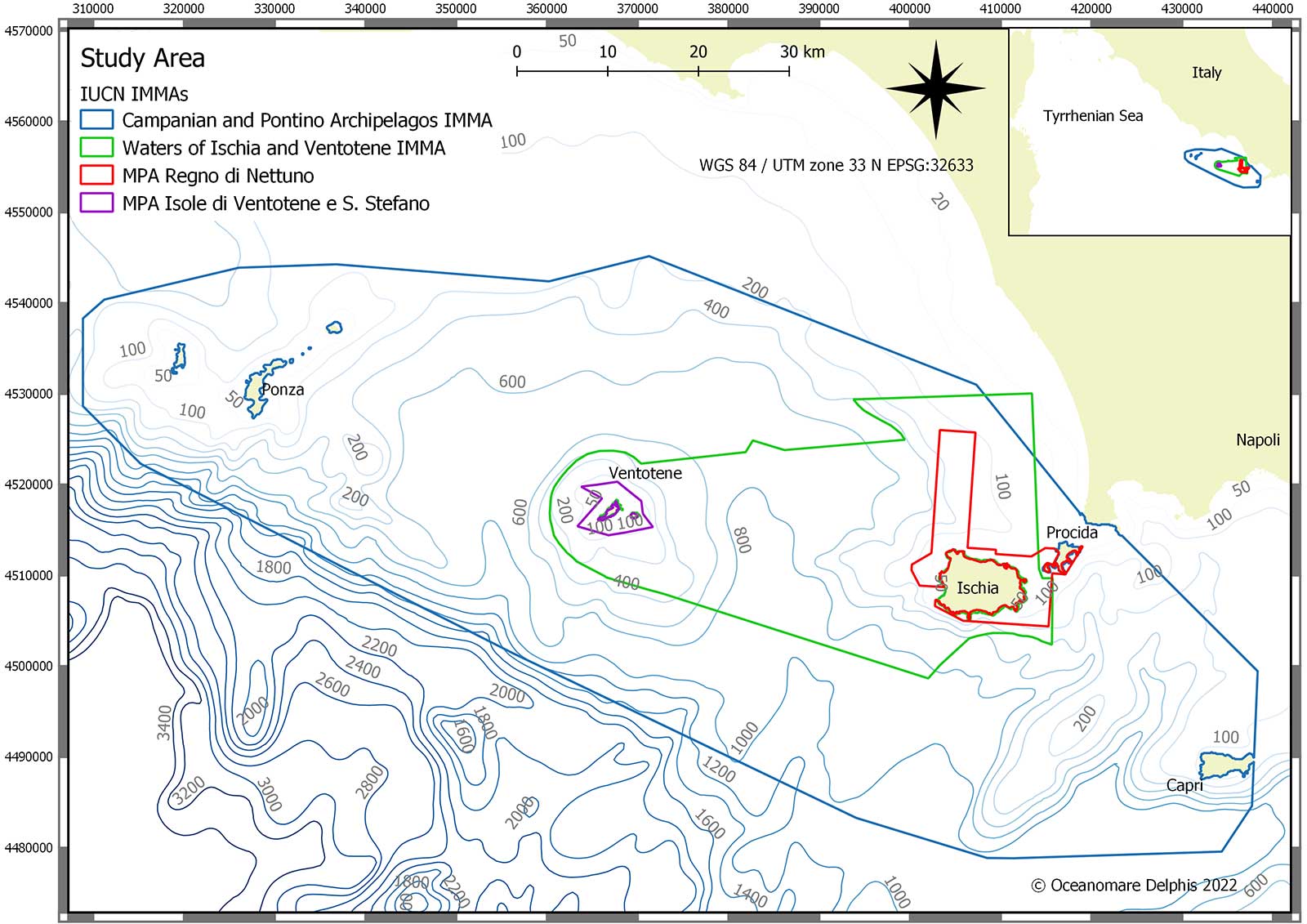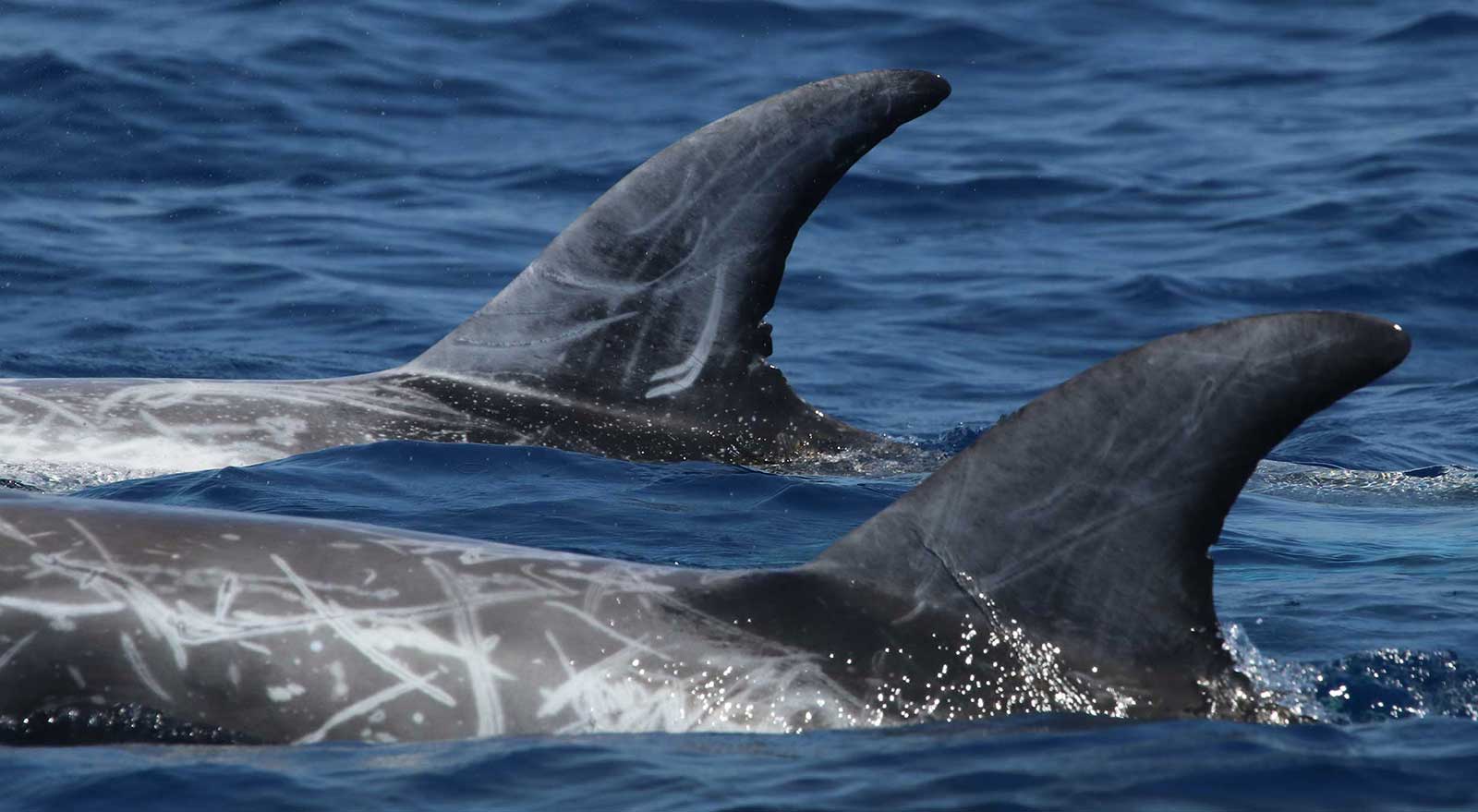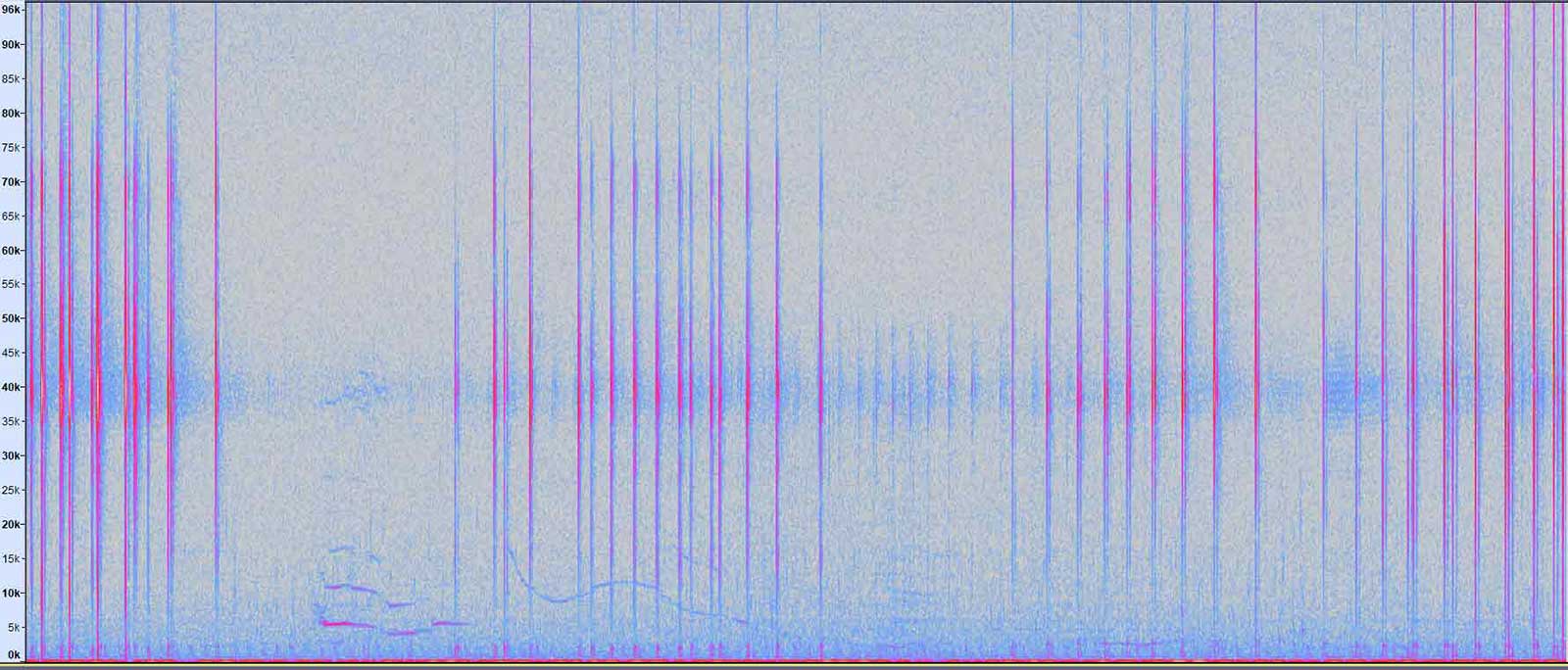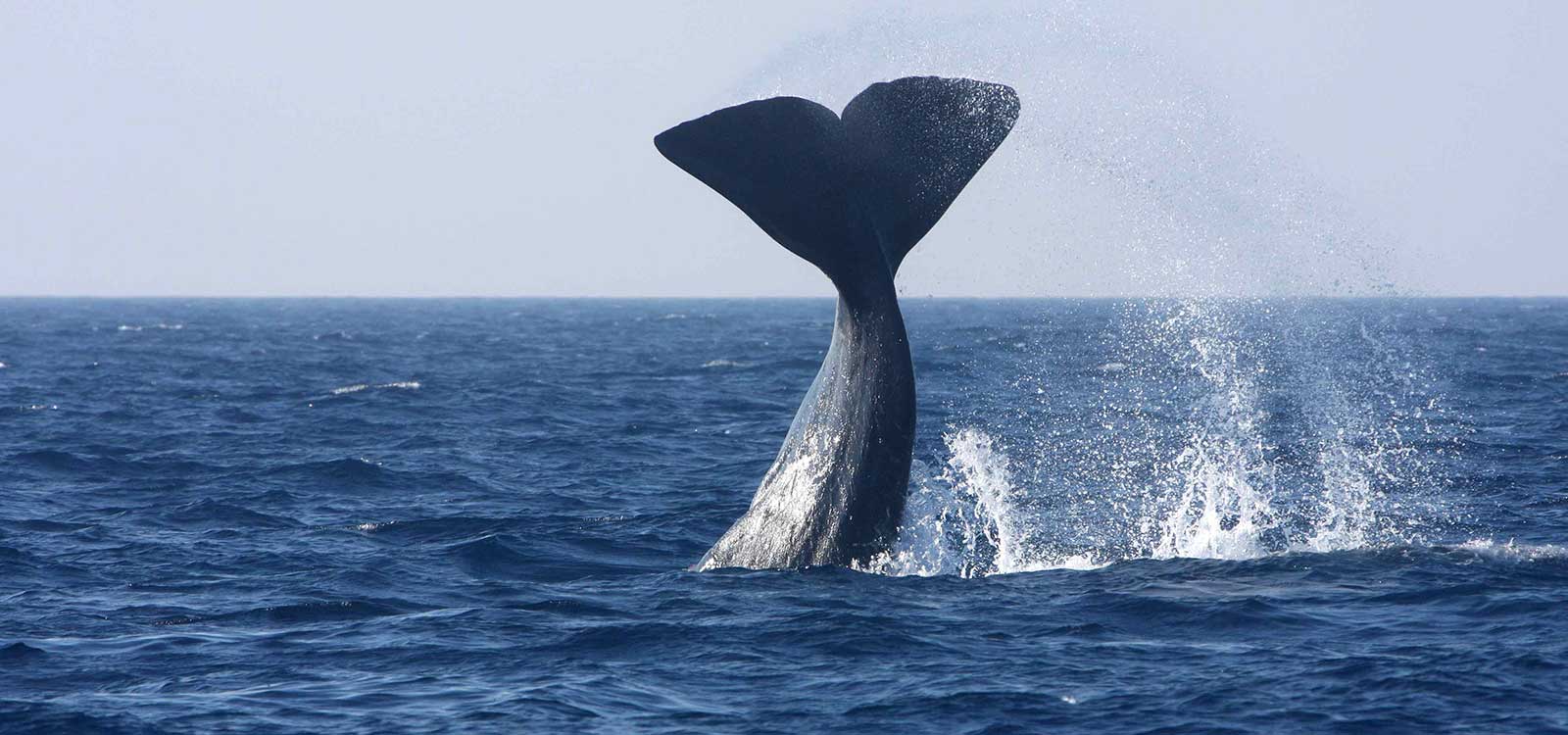Ischia Dolphin Project
The Pontine and Campanian Archipelago represent a unique opportunity to study cetaceans. Since 1991 the presence of seven different Mediterranean species has been recorded there.
The study area is known for its high pelagic biodiversity. The region has been described as a feeding site for fin whales (Balaenoptera physalus), a feeding and breeding site for striped dolphins (Stenella coeruleoalba), Risso's dolphins (Grampus griseus), bottlenose dolphins (Tursiops truncatus) and sperm whales (Physeter macrocephalus). Finally, the area has been classified as a critical habitat for the Mediterranean common dolphin (Delphinus delphis) in the IUCN Cetacean Action Plan. Occasional sightings of pilot whales (Globicephala melas) are also recorded.
Since 1997, the study has focused on the Cuma Canyon, a deep submarine valley located between the islands of Ischia and Ventotene. Submarine canyons play a critical role in biological events and are often areas of high species diversity because of their oceanographic features.
Thanks to the data collected with the help of volunteers, in 2008 Oceanomare Delphis succeeded in including part of the canyon of Cuma (Zone D) in the boundaries of the Marine Protected Area "Regno di Nettuno" - islands of Ischia, Procida and Vivara. Zone D of the MPA represents a special protection area dedicated to cetaceans and the critical habitat of Mediterranean common dolphins, classified as endangered in the IUCN Red List.
In October 2016, during the first "Important Marine Mammals Areas (IMMAs) Regional Workshop" for the Mediterranean organized by the International Union for Conservation of Nature (IUCN) Task Force, ODO nominated the waters of Ischia and Ventotene and the Campania and Pontine archipelagos as IMMAs. After one year, both areas were officially recognized as IMMAs in October 2017.
Study Area

The study area is located in the central Tyrrhenian Sea (Italy) and covers about 8800 km2; it includes the Campanian Archipelago (Gulf of Naples, islands of Ischia, Procida, Capri) and the Pontine Archipelago (Gulf of Gaeta, islands of Ventotene and Ponza) both located on the eastern Tyrrhenian continental margin. It is characterized by volcanic activity and complex geological structures, including submarine canyons, submerged mountains, erosional channels, and rocky shoals.
The waters northwest of Ischia include the submarine canyon of Cuma, known for its variety of pelagic fish, seabirds, and cetaceans. The canyon trench (850 m deep) forms an underwater valley between Ischia and Ventotene.
Southeast of Ischia, in the Gulf of Naples, the shelf is interrupted offshore by two large canyons (Magnaghi and Dohrn), which form the Magnaghi-Dohrn canyon system.
Goals
The main goal of the project is to identify key areas for cetaceans. Other objectives are:
Beyond these merely scientific goals, the Ischia Dolphin Project aims to improve the management of cetacean species by:
raise awareness among the public about the threats and problems of cetaceans and their environment;
sharing the results of the research with the local and the international authorities, as well as to the scientific community and the environmentalist organizations;
the protection and conservation of the area.
RESEARCH TECHNIQUES
Photo-identification
Photo-identification is a valuable and widely used technique in research to obtain important information on population size, distribution and movements of animals, social organization, reproductive rate, and habitat use. Cetaceans are photographed and identified based on natural and permanent features present on the body.

Sperm whale: 102 individuals photo-identified. Of these, 71 (70%) were sighted in one year only, and 31 (30%) were recaptured in different years after their initial identification.
Common dolphin: 94 photo-identified individuals. 74 of the identified individuals were recaptured over the years. Of these, 24 dolphins were sighted over two to four years; 19 individuals were sighted over five to seven years; 31 showed a high degree of site fidelity as they were sighted multiple times over eight to eleven years.
Risso's dolphin: 43 photo-identified individuals.
Bottlenose dolphin: 204 photo-identified individuals, including 44 females. 110 individuals (including 33 females) have been re-sighted over the years.
Bioacoustic
Cetacean detections are also conducted acoustically, listening to the sounds produced by the animals.
The project uses an array of stereo-towed hydrophones realized in the CIBRA laboratory (bandwidth 600 Hz – 100 kHz) of the University of Pavia.
The differences in the arrival time of cetacean vocalizations on the two hydrophones allow us to localize the animals using PAMGUARD.
The sound reproduction system installed onboard allows all participants to listen to the sounds of the sea in real-time. In the case of a sighting, live listening to the vocalizations of dolphins or sperm whales is an exciting experience.

Spectrogram of clicks and whistles of striped dolphin
Whistles, clicks, and other vocalizations are analyzed to define the acoustic characteristics of different species in the study area.
The study focuses on acoustic communication in animals, the development of protocols for monitoring and census with passive acoustics, and the creation of an archive of Mediterranean cetacean sounds.
Behavior
Through behavioral data, we obtain information to understand cetacean activities like feeding habits, social communication, and interaction with human activities.
We record different variables (group size and composition, aerial behaviors, social interactions, and so on) at standard intervals of three minutes (3-minute sampling method).

